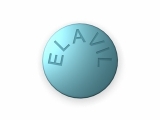Inventory control in pharmacy
Running a pharmacy requires effective inventory management to ensure that the right medications and supplies are always available for customers. In order to streamline operations and minimize costs, it is important to implement efficient inventory management strategies.
1. Utilize an Automated Inventory System
Implementing an automated inventory system can greatly improve the efficiency of managing inventory in a pharmacy. With this system, you can track stock levels, set automatic reorder points, and receive real-time notifications when inventory is running low. This will help prevent stockouts and ensure that essential medications are always in stock.
2. Categorize and Organize Inventory
Organizing inventory into different categories and implementing a clear labeling system can help streamline inventory management in a pharmacy. Categorizing medications based on their therapeutic classes or usage can make it easier to locate and restock items. Additionally, clearly labeled shelves and storage areas will help reduce the time spent searching for specific products.
3. Conduct Regular Inventory Audits
Regularly auditing inventory is crucial to ensure accuracy and identify any discrepancies. Conducting physical inventory counts and comparing them to the records in the system will help identify any discrepancies or potential issues. By addressing these issues promptly, you can maintain accurate inventory records and avoid any disruptions in the availability of medications.
4. Collaborate with Suppliers
Establishing good relationships with suppliers is important for efficient inventory management. By communicating regularly with suppliers and providing them with accurate demand forecasts, you can ensure timely deliveries and reduce the likelihood of stockouts. Collaborating with suppliers can also help negotiate better pricing and terms, leading to cost savings for the pharmacy.
5. Implement FIFO and FEFO Systems
Implementing the First-In, First-Out (FIFO) and First-Expired, First-Out (FEFO) systems can minimize waste and ensure that medications with shorter expiry dates are used first. These systems involve organizing inventory in a way that ensures the oldest products are dispensed or sold first, reducing the risk of expired medications.
Efficient inventory management is crucial for the smooth operation of a pharmacy. By implementing automated systems, organizing inventory, conducting regular audits, collaborating with suppliers, and utilizing FIFO and FEFO systems, pharmacies can optimize their inventory management processes and provide better service to their customers.
Benefits of Efficient Inventory Management
In a pharmacy, efficient inventory management plays a crucial role in ensuring smooth operations and providing quality healthcare services to patients. Here are some key benefits of implementing efficient inventory management:
1. Minimize stockouts and overstocking
Efficient inventory management helps in accurately forecasting the demand for medications and ensuring that the right quantities are stocked at all times. This minimizes the risk of stockouts, where essential medications are unavailable, and overstocking, which can lead to wastage and increased costs.
2. Optimize cash flow
By implementing efficient inventory management practices, pharmacies can optimize their cash flow. This involves managing inventory levels and ordering medications only when necessary, minimizing excess inventory and tying up valuable capital. It also helps in reducing holding costs and improving profitability.
3. Enhance customer satisfaction
Efficient inventory management ensures that pharmacies are well-stocked with the medications that patients need. This leads to shorter wait times and increases customer satisfaction. Patients can rely on the pharmacy to provide them with the necessary medications in a timely manner, improving their overall experience.
4. Reduce waste and expiration
An efficient inventory management system enables pharmacies to track expiration dates and rotate stock accordingly. This helps in reducing waste by ensuring that medications are used before they expire. By minimizing expired medications, pharmacies can save costs and ensure the quality and safety of the medications they provide.
5. Streamline operations
Efficient inventory management streamlines pharmacy operations by automating processes and reducing manual tasks. This saves time and improves overall efficiency. With the right inventory management system, pharmacies can easily track stock levels, generate reports, and identify trends, allowing them to make informed decisions and optimize their operations.
Efficient inventory management in a pharmacy is essential for maintaining optimal stock levels, reducing costs, and improving customer satisfaction. Implementing the right inventory management practices can help pharmacies streamline their operations and provide quality healthcare services to their patients.
Key Strategies for Efficient Inventory Management
1. Implement an Automated Inventory System
One of the key strategies for efficient inventory management in a pharmacy is to implement an automated inventory system. This system uses advanced software and technologies to track and manage inventory levels in real-time, reducing the risk of overstocking or running out of essential medicines and supplies.
2. Utilize ABC Analysis
Another important strategy is to utilize ABC analysis to categorize inventory items based on their importance and usage. This analysis helps in prioritizing the management of items, ensuring that essential and high-value drugs are always available in sufficient quantities, while low-value items are managed accordingly.
3. Set Optimal Reorder Points
In order to minimize stockouts and avoid excessive inventory, it is crucial to set optimal reorder points for each inventory item. These reorder points are based on factors such as lead time, demand variability, and safety stock levels, ensuring that orders are placed at the right time to maintain optimal inventory levels.
4. Establish a Supplier Management System
An effective supplier management system is essential for efficient inventory management in a pharmacy. This involves establishing strong relationships with reliable suppliers, negotiating favorable terms, and maintaining open communication channels to ensure timely deliveries and resolve any supply chain issues.
5. Regularly Monitor and Analyze Inventory Performance
Continuous monitoring and analysis of inventory performance is crucial for identifying trends, forecasting demand, and making informed decisions. By regularly reviewing key inventory metrics such as turnover rate, stockout rates, and carrying costs, pharmacy managers can identify areas for improvement and implement proactive strategies to optimize inventory management processes.
6. Train and Empower Staff
Investing in training and empowering pharmacy staff is essential for efficient inventory management. By providing comprehensive training on inventory management procedures, systems, and technologies, staff members can actively contribute to maintaining accurate inventory records, addressing discrepancies, and ensuring smooth inventory operations.
7. Implement Quality Control Measures
Implementing quality control measures is crucial for maintaining the integrity of inventory items in a pharmacy. This includes conducting regular quality checks, proper storage and handling of medicines, and implementing expiry date management systems to prevent the inventory from becoming outdated or unusable.
In conclusion, efficient inventory management in a pharmacy requires the implementation of automated systems, the utilization of ABC analysis, setting optimal reorder points, establishing a supplier management system, regular monitoring and analysis, training and empowering staff, and implementing quality control measures. By adopting these key strategies, pharmacies can streamline their inventory management processes, reduce costs, and ensure the availability of essential medicines and supplies for their patients.
Effective Ordering and Receiving Processes
Streamline your inventory management with efficient ordering and receiving processes.
Managing inventory in a pharmacy can be a complex task, but with our effective ordering and receiving processes, you can streamline the entire process and ensure you always have the medications and supplies you need.
Automated inventory tracking
Our system utilizes advanced inventory tracking technologies to automate the ordering and receiving processes. This helps to eliminate manual errors and ensures accurate stock levels at all times. With real-time data, you can easily monitor inventory levels and make informed decisions about when to reorder.
Supplier integration
Our ordering and receiving processes are seamlessly integrated with your suppliers. This means that as soon as an order is placed, it is automatically sent to the supplier, reducing the time it takes to receive the products. Additionally, our system keeps track of backorders and provides regular updates on delivery times.
Efficient stock rotation
Our system includes features that allow you to track expiration dates and implement a first-in, first-out (FIFO) stock rotation system. This helps to ensure that medications and supplies with shorter shelf lives are used first, reducing wastage and the risk of expired products.
Detailed reporting and analytics
In addition to streamlining the ordering and receiving processes, our system also provides detailed reporting and analytics. This allows you to generate reports on product usage, identify trends, and make data-driven decisions to optimize your inventory management.
Scalable solution
Our ordering and receiving processes are designed to be scalable, whether you have a small independent pharmacy or a large chain. Our system can handle a high volume of orders and suppliers, ensuring efficient operations no matter the size of your business.
With our effective ordering and receiving processes, you can take control of your pharmacy inventory and improve efficiency, ultimately providing better care to your patients.
Optimizing Storage and Layout
Maximize Space Utilization
Efficiently managing inventory in a pharmacy requires optimizing storage and layout to maximize space utilization. By utilizing vertical space through the installation of tall shelving units, you can free up valuable floor space and store more products. Additionally, using storage solutions such as bins, drawers, and dividers can help organize smaller items and make better use of available space.
Categorize and Label Inventory
Categorizing and labeling inventory is essential for efficient management. It allows pharmacists and staff to quickly locate and retrieve products, reducing search times and minimizing the risk of errors. Consider using a color-coded system or clear labels for different categories of medications, such as prescription drugs, over-the-counter products, or medical supplies. Clear labels can also help in identifying expiration dates and ensuring timely stock rotation.
Implement a First-In, First-Out (FIFO) System
Implementing a first-in, first-out (FIFO) system is crucial to prevent product expiration and reduce waste. This system ensures that older inventory is used before newer stock, reducing the risk of products expiring and becoming obsolete. By organizing inventory in a way that allows for easy identification of expiration dates, pharmacists can quickly identify products that need to be used or disposed of first.
Utilize Inventory Management Software
Investing in inventory management software can greatly enhance efficiency in a pharmacy setting. These software solutions can provide real-time tracking, automated reordering, and detailed analytics on inventory levels, allowing pharmacists to make informed decisions. By utilizing such software tools, pharmacists can optimize inventory levels, prevent stockouts, and reduce excess inventory, ultimately improving customer satisfaction and the bottom line.
Regularly Audit and Reevaluate Inventory
Regularly auditing and reevaluating your inventory is essential for maintaining efficiency. Conducting periodic inventory counts can help identify discrepancies, such as missing or misplaced items, and address them promptly. Additionally, monitoring sales trends and adjusting inventory levels accordingly can help optimize stock levels and reduce carrying costs.
Conclusion
Optimizing storage and layout in a pharmacy is vital for efficiently managing inventory. By maximizing space utilization, categorizing and labeling inventory, implementing a FIFO system, utilizing inventory management software, and regularly auditing inventory, pharmacists can streamline operations, reduce waste, and improve overall efficiency.
Inventory Management Best Practices
1. Regular Stock Audit
Performing regular stock audits is an essential step in efficient inventory management. By conducting routine audits, you can accurately track the quantity of each product in your pharmacy. This helps prevent overstocking or running out of crucial medications, ensuring you always have the right products available for your customers.
2. Categorize and Label Items
Properly categorizing and labeling items in your inventory simplifies the stock management process. Create logical categories for different types of medications, such as over-the-counter drugs, prescription medications, and medical supplies. Label all items with clear and accurate descriptions, including the generic and brand names, dosage, and expiration dates.
3. Use an Inventory Management System
Implementing an inventory management system can greatly streamline your pharmacy's stock control processes. These systems allow you to track stock levels, automate reordering, and generate detailed reports on sales and inventory turnover. By using such a system, you can optimize your inventory levels and minimize the risk of stockouts or expired products.
4. Set Reorder Points and Safety Stock Levels
Setting reorder points and safety stock levels is crucial for avoiding stockouts. Reorder points indicate when it's time to reorder a particular product, while safety stock levels provide a buffer to cover unexpected demand spikes or supplier delays. Calculating these levels based on historical sales data and lead times will help you maintain an adequate inventory without excessive surplus.
5. Monitor Expiration Dates
Regularly monitoring expiration dates is critical in a pharmacy to maintain the quality and safety of your products. Implement a system that alerts you in advance of upcoming expirations, allowing you to take appropriate action, such as discounts or removal from shelves. This practice ensures the highest level of patient care and prevents selling expired medications.
6. Train Staff on Inventory Management
Well-trained staff are essential for efficient inventory management. Provide your employees with proper training on how to accurately track and manage inventory, including procedures for receiving new stock, conducting audits, and handling expired or damaged products. Regularly update their knowledge on new medications and inventory management best practices.
7. Analyze Sales and Forecast Demand
Analyzing sales patterns and forecasting demand can help you optimize your inventory levels. By identifying trends and seasonal fluctuations, you can adjust your stock quantities accordingly to meet customer demands. Utilize sales data, market research, and feedback from customers to make informed decisions and avoid stock imbalances.
Incorporating these inventory management best practices into your pharmacy operations will help you efficiently manage your stock, improve customer service, and ensure the availability of essential medications when needed. Implementing a well-structured inventory control system will save you time, money, and resources in the long run.
Follow us on Twitter @Pharmaceuticals #Pharmacy
Subscribe on YouTube @PharmaceuticalsYouTube





Be the first to comment on "Inventory control in pharmacy"